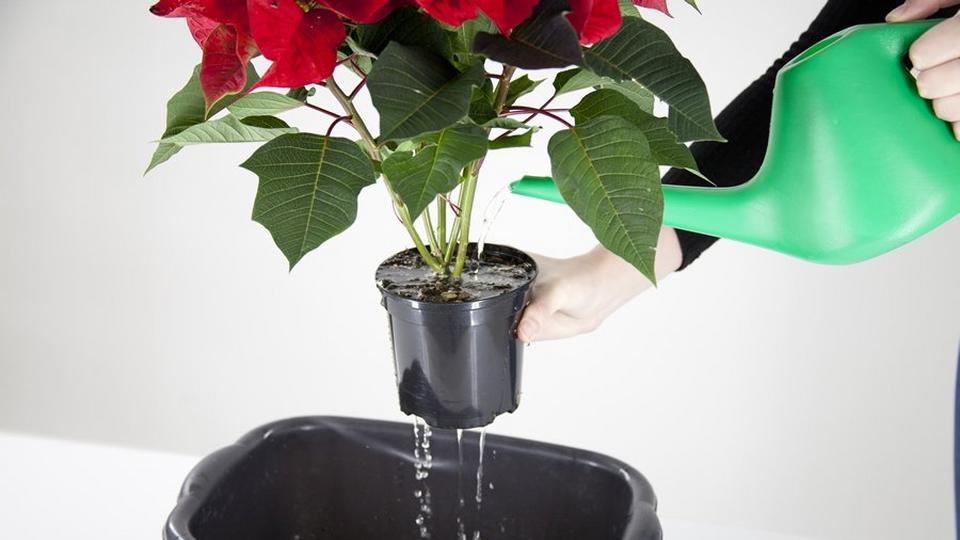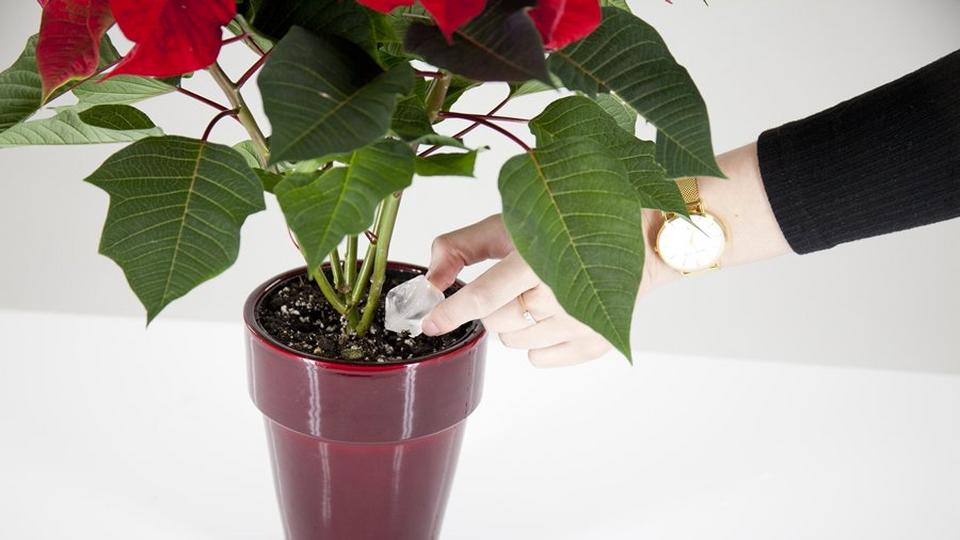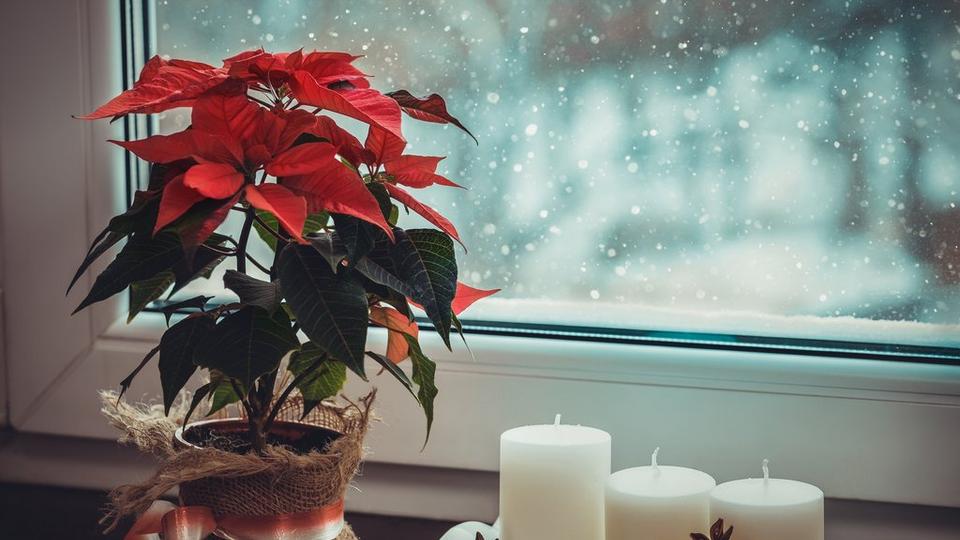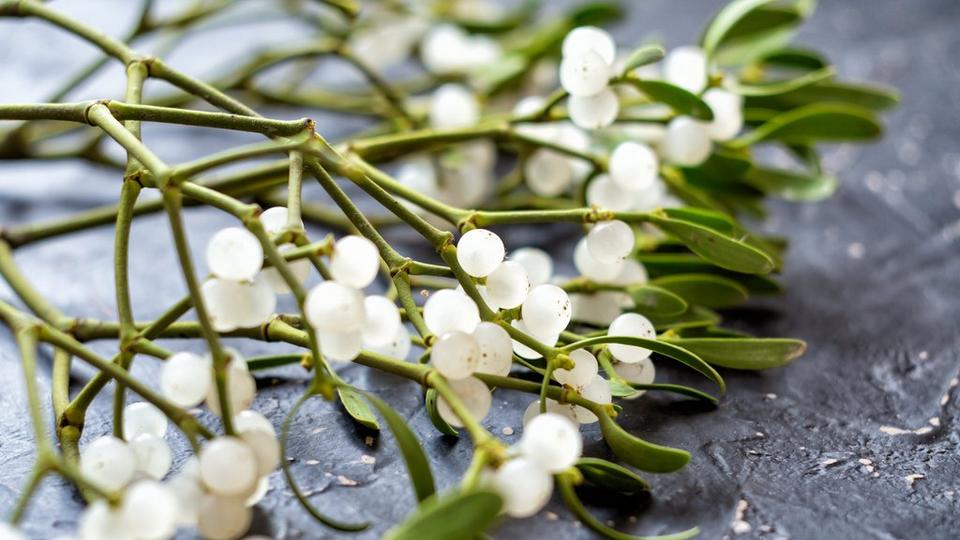Poinsettia: Ultimate Flower Guide
For those of us who just can't get enough of Christmas (it’s never too early to start decorating for Christmas by the way) the poinsettia plant is the perfect first step to spreading a little festive joy in our homes. With its striking red and green leaves and starry shape, it easily adds a festive touch wherever it's featured. However, they don’t just come in the red we see everywhere leading up to Christmas. There are a variety of different colours and variations to match your décor and set new trends for your very own personalised Christmas themes.
Plus, once the poinsettia is in place you can slowly start to sneak other Christmas decorations out around your home. Those sparkly reindeers on the living room shelves…a mess of fairy lights in a vase in the kitchen – your partner will be surrounded by Christmas before they can protest and by then it's time to put up the tree!
Before we get ahead of ourselves and plan a carolling trip around the neighbourhood, maybe you're wondering how to care for and keep your poinsettia plant looking its best?
Poinsettia Guide
Take a look at our poinsettia guide below, featuring plenty of tips to keep this festive beauty thriving throughout December and beyond.
The anatomy of a poinsettia
Colours
Generally, we associate the Poinsettia with the colour red because that’s what we see during the lead up to Christmas. However, there are over one hundred different varieties from the traditional red through to stunning whites, pinks, yellow and even variegated versions.
Why are poinsettias associated with Christmas?
Poinsettias are one of the most popular plants to gift to loved ones come Christmas time. They are sometimes referred to as the Christmas Star due to the shape of their leaves, fanning out into a stunning cosmic inspired shape.
In Mexico, they also have the name 'Flores de Noche Buena' which translates to 'Flowers of the Holy Night'. This name is believed to come from a biblical story about a Mexican girl who presented a bouquet of weeds to baby Jesus. When they were placed before the crib they transformed into the poinsettia and this was considered to be a Christmas miracle. We'd also love to be able to turn those weeds in our gardens into stunning plants!
Where do poinsettias come from?
While we associate poinsettias with those darker nights with the heating turned up and the snuggly blankets out, you may be surprised to discover that they actually hail from Mexico and really don't like the cold. That's why they're usually well-wrapped when they first arrive and where you feature them in your home makes a big difference to how well they do over the Christmas season.
How to care for a poinsettia
Keep your poinsettia looking as stunning as the day you bought it with our care guide featuring everything you need to know and more.
Where should you place a poinsettia?
Poinsettias love indirect sunlight and mild temperatures. Here are the four key things to consider when deciding where to feature your plant:
- Poinsettias enjoy room temperatures of between 16°C and 22°C. Time to sneak the heating up a few notches.
- Keep your poinsettia away from radiators, as well as cold windows and draughts.
- Expose the plant to indirect sunlight during the daytime, where it can enjoy the light but not get sunburnt.
- Avoid moving your poinsettia from room to room and differing temperatures too often.
The perfect light for a poinsettia plant
Like finding the perfect light for that selfie, you need to be just as careful when finding a spot for your prized poinsettia.
Here's a trick to help; at the height of a clear day, when the sun is highest in the sky, use your hand to cast a shadow over the top of/near to the plant shown below. Judge the darkness of the shadow to determine if the light is optimal using these pictures as a reference.



How to water a poinsettia
All living things need water to thrive and your poinsettia is no different. While you may not be encouraging your plant to begrudgingly swallow down a litre bottle of water by midday, it does need to be checked regularly to ensure it stays happy and hydrated.
How to tell if your poinsettia needs water
The best way to determine if a poinsettia needs water is to poke around in the potting soil with your finger. We didn't say this was going to be glamorous!
- Fully Dry - If the soil is dry all the way through and the pot feels light when picked up, soak the plant in the sink. The aim of the game is to avoid dry soil altogether.
- Half Dry - If the top inch of soil feels dry but underneath is damp, a light water to top it up is ideal – aim to keep the soil damp throughout at all times.
- Damp - If the soil is damp throughout, congratulate yourself for being such a great plant parent, then leave the poinsettia and check back tomorrow with another soil test.
- Sodden/Wet - If the soil is continually wet or sodden this will put stress on the roots. Leave the plant alone for a week before watering again. It's tough, we know but your poinsettia will thank you for it.
So, how much water does a poinsettia need?
Well, like most house plants too much water is just as bad as too little. A poinsettia will need enough water to keep the potting soil damp but not sodden. However, it is important to remember that watering frequency for any plant will depend on:
- The size of the plant
- Where the plant is located
- The room temperature
Don't be put off, it's easy when you know how! Here are our tips for how to water your poinsettia to keep it looking great during the Christmas season, ready for the big day itself. Here are three ways you can stay on top of watering your poinsettia, choose a technique that works for you and your routine to keep your planting looking fresh and vibrant.

Lightly water the plant each day

Soak in the sink

Add ice
Do I need to mist poinsettia plants?
Because poinsettias originate in the hot climate of Mexico, they do enjoy a little humidity now and then which can be achieved with misting or using a pebble tray. Learn more about these techniques below.
Misting
Misting simply involves spraying the leaves (and bracts) of a poinsettia with a fine spritz of water regularly to keep the plant humid. Think of it like those fancy fruit and veg aisles in the supermarket, the mist keeps the plant happy and saves you time in the long run too.
Grab yourself a spray bottle and fill it with room temperature water. Spray the leaves of the poinsettia every other day for ideal humidity.
Pebble tray
Another simple way of keeping a poinsettia humid is to use a pebble tray. Find a tray or plate that has a larger diameter than the plant and then fill it with small rounded pebbles.
When water is poured into the tray with the pebbles, it slowly evaporates creating a humid environment for the plant sitting above. Clever, right? The pebbles simply separate the plant pot from the water and allow air to circulate over the water. Pebble trays are also a great technique when it comes to orchid care.
Do I need to feed my poinsettia?
While you won't be throwing those Christmas dinner leftovers to your plant, poinsettias do enjoy a little plant food from time to time to keep them looking their best.
Any good quality all-purpose liquid plant food is suitable for feeding a poinsettia, although liquid or soluble food is by far the easiest to apply.
How to rebloom a poinsettia
A poinsettia is for life, not just for Christmas, and you can encourage this gorgeous plant to bloom throughout the year and then again for the next festive season (which we're sure will come round far too quickly, as always).
Your plant should be in full bloom when you receive it, where you'll enjoy its stunning red and green colours throughout December and into January. Come February, you'll notice that the central flowers and red bracts are starting to fade away – sad times! The stems will also become thicker and more stick like and you may notice a few leaves dropping or shrivelling. This is also a good time to feed your poinsettia with a liquid fertiliser.
When March rolls around (and yellow buds of daffodils are starting to appear), this is when it's time to get started with the re-blooming process. Be brave and cut your poinsettia's stems under the first leaf node, just below the bracts. Leave your poinsettia in it's pot, until you need to tend to it again in early summer.
Poinsettia's might not be the first plant you think of when you're basking in the summer sun in your garden, but this is when your plant has the best chance to rebloom, in time to shine for it's second Christmas. Re-pot your plant in June and place it outside in indirect sunlight, and now is the time to fertilise your poinsettia again with a mixture of half recommended strength. Come late August, it's time to bring your poinsettia back indoors and place it in a suitable location where it can enjoy a fairly consistent temperature.
September not only signals the start of a new school year, but is the time to really shake things up to get your poinsettia blooming! Give your poinsettia indirect sunlight between 8am and 5pm, but then put the plant in a pitch black room (or cover it with a bucket if black-out curtains aren't your thing) from 5pm until 8am. Starving the poinsettia of light during this time encourages it to produce that familiar red bloom. If you notice little change to the colour of the bracts, make sure the plant is in total darkness for 3 weeks (or longer), or try longer periods of darkness or more days of it being subject to darkness. We know, it sounds like torture for the plant but it will all work out in the end. Promise!
Are poinsettias toxic to pets?
Poinsettias are poisonous due do the sap found in their leaves, which can weep when cut or damaged, so it's best to keep a poinsettia out of reach of cats and dogs. If your pet does ingest any of the sap there is no immediate need to panic, usually they will only have a mild reaction which will resolve without treatment.



